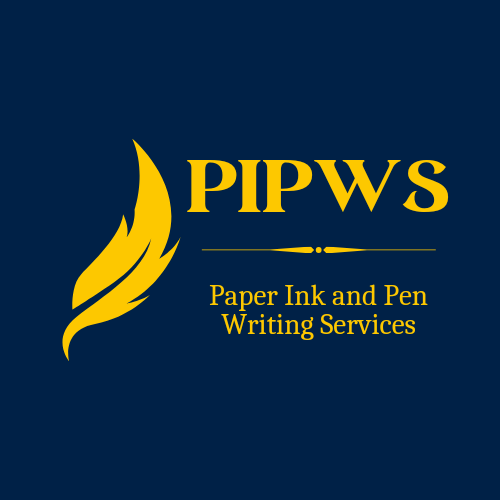Click the icon below to listen to the text.
Chicago format, also known as the Chicago Manual of Style (CMOS), is the third of the four most common academic writing formats students use to complete their academic assignments. As part of our introduction to the basics of academic writing, we explore the Turabian version of this format in our Academic Writing Basics course. We focus on the Turabian form of the Chicago style because it is the designated version for student use. You will learn the reason for this distinction shortly as we discuss the nature of the referencing style.
Just like in our discussion of APA and MLA formats, our introduction to the Chicago format (Turabian style) discusses its history, purpose, and features. We also explore the academic assignments that would require applying the referencing style. This breakdown should enable you to appreciate why your academic papers would be mandated to adhere to its standards. (We shall have a similar presentation for Harvard style in the next lesson). Here is the order our discussion follows:
Table of Contents
Introduction to Chicago Format (Turabian Style)
History
The Chicago Manual of Style is a product of the University of Chicago through the University of Chicago Press. The organization introduced the guidelines in 1906 for circulation around the university community as an initial style sheet known as The Manual of Style: Being a Compilation of the Typographical Rules in Force at the University of Chicago Press, to Which Are Appended Specimens of Type in Use. These guidelines were the product of the unofficial guidelines followed from 1903 titled “the University Press style book and style sheet”.
The Turabian style came into the picture in 1937 through Kate Larimore Turabian, the official publications editor. You may consider the style as a subset of the Chicago format (CMOS), which is a simplified form of the style for student academic tasks. She prepared the first Turabian style guidelines in a pamphlet known as A Manual for Writers of Research Papers, Theses, and Dissertations. The University of Chicago Press also publishes the Turabian style guidelines.
Purpose
The CMOS serves as the standard book publishing guide for US-style publications. Academic institutions have also adopted the format for classroom tests. Editors and writers prefer the style because:
- CMOS was among the earliest publication style guides to exist in book form.
- CMOS was the only style an academic press in North America produced. (Other styles were a product of professional associations).
The University of Chicago Press staff prepared the format to describe guidelines to ensure their publication would follow a consistent and professional style across different disciplines. CMOS has become the most preferable publishing guide because the style:
- Is comprehensive
- Addresses most of the relevant questions to writing, editing, and publishing.
- Offers guidelines applicable in any discipline.
Publishers of academic books and journals were the target for CMOS but humanities, social sciences, students, and publishers of trade books and novels also use the format.
Chicago Format Features
The most prominent feature of the Turabian style is the citation system. Two predominant systems exist for student assignments. One is the notes and bibliography style. Writers indicate citations as footnotes or endnotes and include a bibliography for the citations. Humanities use this citation system. The other system is the author-date style (or Reference List style). Citations include in-text citations presented in parentheses and accompanied by a works cited or reference list with full details. Disciplines that prefer the system include social sciences, natural sciences, and physical sciences. The format is known for its flexibility in that some rules are open to interpretation based on context.
The Manual of Style for Chicago format has evolved over time up to its 17th edition, which is currently in use since 2017. Its features remain in tandem with the Turabian style, which is currently in its 9th edition since 2018. Each edition addresses questions that arise as changes occur in the academic sphere. The main differences between CMOS and Turabian are two:
- Turabian covers a narrower scope of CMOS.
- Turabian targets students while CMOS targets scholarly authors preparing documents for publication.
CMOS has two main definitive components. One is the unique punctuation requirements writers should observe. The other is the type of source citation structure to follow. The Turabian style, on the other hand, emphasizes:
- Strong research questions
- Evidence-based arguments
- A logical structure
- Source citation
Other factors under consideration in the features are:
- Preparing manuscripts
- Document setup for margins, spacing, indentation, alignment, font and font size, headers, and page numbers.
- Alphabetization in different areas of the paper
- Structure of headings and subheadings
- Document components such as the title page, abstract, table of contents, and reference page
- Order of pages
- Referencing sources of information
- Use of graphics (tables and figures)
Additional factors the guidelines cover include writing styles concerning:
- Spelling
- Proper usage of abbreviations
- Spacing
- Punctuation
- Number rules
Chicago Format Assignments
Academic tasks students may encounter in which they would need to use the Turabian style depending on their discipline of study. These include:
- History
- Humanities like literature and art
- Sciences
- Social sciences
Such assignments would include:
- Essays
- Literary analyses
- Research papers
- Literature reviews
- Abstracts
- Case analyses
- Executive summaries
- Introductions
- Research reviews
- Term papers
Information Sources

We have cross-checked our learning material about the Chicago format (Turabian style) against other academic publications to ascertain the quality of our information. Doing so has allowed us to ensure the descriptions and illustrations we provide for concepts the lessons discuss are accurate and up-to-date. Some of the methods we use may be inaccessible in other publicly-available academic literature because they are our inventions. However, any other approach we have not developed is accessible through academic literature available for public use. Academic publications we have used to cross-check the academic writing concepts we have captured include:
The UW Tacoma Library. (2021). THIST 101 Introduction to History Methods – Sundermann: Chicago (Turabian) Style. Retrieved from https://guides.lib.uw.edu/c.php?g=734895&p=5251296
Witynski, M. (2022). The Chicago Manual of Style, Explained. Retrieved from https://news.uchicago.edu/explainer/chicago-manual-style-explained
The University of Chicago. (2017). About the Chicago Manual of Style. Retrieved from https://www.chicagomanualofstyle.org/help-tools/about.html
Caulfield, J. (2021). Introduction to Turabian Style | Citations & Formatting. Retrieved from https://www.scribbr.com/chicago-style/turabian/
Hansen, J. (2020). Chicago/Turabian Style Guide. Retrieved from https://www.easybib.com/guides/citation-guides/chicago-turabian/

